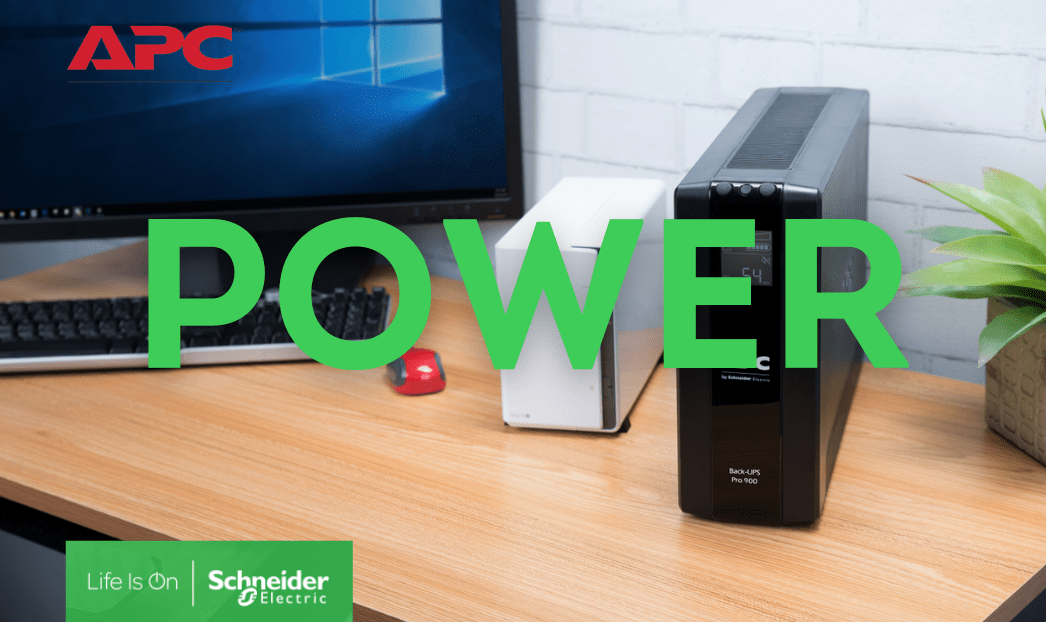
When looking at UPS models you may notice the load sizing being measured with watts (W) and volt-amps (VA). For many, there is a lot of confusion around these measurements, with many UPS companies adding to the confusion by failing to distinguish between them.
What are Watts and Volt-Amps?
We use watts and volt-amps to express the power that is drawn by computing equipment.
Watts = the real power drawn by the equipment.
Volt-Amps = the ‘apparent power’ and a product of the voltage applied to the equipment x the current drawn by the equipment.
Both of these ratings have a use and purpose when it comes to measuring the power of the equipment. The watt rating will tell you the actual power purchased from the utility company, and the VA rating will help you make decisions on wiring sizes and circuit breakers.
Whilst on smaller electrical equipment the VA and watt ratings may be identical, for computing equipment the ratings may differ slightly with the VA rating always being equal to or greater than the watt rating.
The power rating of the UPS
When you look into UPS models you will see that they have maximum watt and VA ratings that cannot be exceeded.
In some cases, UPS manufacturers may only publish the VA rating of their UPS. For small UPS systems, the de-facto standard for watt ratings is that it will be approximately 60% of the VA rating stated.
Especially for UPS that are designed for computer loads, it will be appropriate to assume that watt to VA ratio will be accurate.
How to avoid sizing errors
Avoid any sizing errors through the Schneider Electric UPS Selector tool to ensure you don’t exceed the watt or VA ratings.
The UPS selector tool will ensure you have an accurate run time and will help you to optimize your system. For more information, check out our blog on Schneider Electric’s UPS Selector Tool here.
If you’re still struggling, the safest approach is to keep the sum of the load nameplate ratings below 60% of the UPS VA rating.
Power Factor
The power factor is the ratio of the watts to VA and will be expressed as either a number or a percentage (ie. 0.8 or 80%). The power factor is the thing that really matters when sizing a UPS for your specific requirements.
The higher power factor that is achieved, the more you get out of your energy. Unity power factor means the watts and VA are equal. This can be achieved through UPS models like the APC Smart-UPS On-Line 6kVA and higher. Even the smaller APC Smart-UPS On-Line models have a 0.9 power factor or higher.
Conclusion
Does the watt vs volt-amp mystery make a little more sense to you now? We hope so! Just remember, the closer together the watt and volt-amps ratings are, the better your UPS will run. The higher the power factor is, the more wattage you will have to support your loads and run times.
If you still find things confusing, the Schneider Electric UPS Selector Tool is always available to help you find the best UPS system for you.
We at Comms Express are also always available to help you with whatever questions you may have! Contact us through our Contact Form for extra help choosing a UPS or to better understand watts vs volt-amps ratings.

For additional help or support with anything mentioned in this blog, or any other products that we stock, don’t hesitate to contact our team! Use our contact form to get in touch and our team will get back to you quickly with our expert knowledge!
This is just a brief look at the APC Range, if you require more Schneider Electric equipment for your business, you can check our Schneider Electric microsite for a wide range of APC products to suit your needs.
Other Schneider Electric products Available from Comms Express:
Server Racks & Accessories | NetBotz Security and Environmental Monitoring | Extended Warranty | Accessory Extended Warranty | Power Distribution Units | Uniterruptible Power Supply
If you require any further information on these or any other products that we stock here at Comms Express, please do not hesitate to contact our team who will be only too happy to help.
Until next time…
